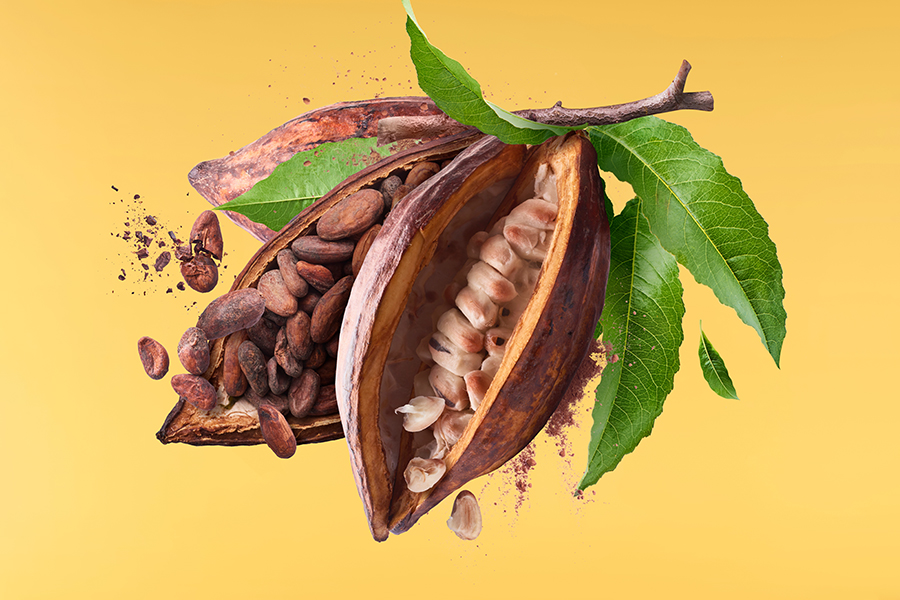Arguably the tastiest, most decadent, rich, and creamy dessert or treat ever – chocolate is a stimulant for the senses. Its delicious flavors inspire smiles and the sharing of chocolate is one of the best gifts in the world.
The next time you pop a chocolate treat in your mouth, ask yourself this question: where does chocolate come from? We may all be familiar with Belgian or Swiss chocolate and think that that is where chocolate originated from. But in actual fact, the story is completely different.
Chocolate, much like its nature, has a rich history and the chocolate-making process is even more fantastic and fascinating. So, without further ado, keep reading to find out more about how chocolate is made, where cocoa comes from, and which countries are the top producers of chocolate.
How chocolate is made
We trace the story of chocolate by beginning with the question: how is chocolate made? If you’re thinking about a chocolatier who spends hours of precious time and labor grinding cocoa beans, you’d be partially right.
However, the process is highly intricate and detailed and requires closer examination. Below, we outline a few of the major steps involved in making chocolate – from the collection of the beans to the final product.
Harvesting
Chocolate is made from cacao but where does cacao come from? The answer is cacao trees. These trees, which can grow between 15 and 25 feet tall, can take anywhere from two to four years to mature and to start producing fruit, which looks like colorful elongated pods (the size and shape of a football). The pods start as flowers and mature to pods and they are then harvested around twice a year, depending on the region where the trees are located. These pods, when harvested, are cut open with machetes to expose the ripe seeds (cacao beans) and pulp. These are then drained from liquids inside of them.
Fermentation
The cacao beans and their pulp will then be turned in order to ensure that heat is evenly distributed with them. Heat is also used to kill the germs in the seed and the pulp’s “sweat” is then drained. This is a process of fermentation and will differ depending on tree to tree. In some cases, fermentation can last anywhere from five to seven days while in other cases, it can last from one to three days.
Drying
The process of drying the beans after fermentation can take place either naturally via sunlight or artificially through a kiln. Drying is important because it reduces the moisture content in the bean and this, in turn, can help prevent the formation of mold. The drying process can take place from one to two weeks, resulting in a color change of the beans from reddish to dark brown.
Manufacturing
Before your favorite chocolate bar is created after the process of drying, it will go through a stringent quality control process that includes sorting, cleaning, and roasting. During roasting, the cocoa beans become browner, and their rich flavor is developed more fully.
Winnowing
This is the process of removing the shells from around the bean. This leaves only the cocoa nib behind – the key ingredient to making chocolate.
Nib grinding
After winnowing, cocoa nibs are ground into a paste that is called chocolate liqueur or cocoa mass. This product contains a relatively equal amount of cocoa solids and cocoa butter. Even though it’s called a liqueur, it is not actually alcoholic.
Conching
Conching involves continued grinding of the chocolate mass to further refine it. At this stage, manufacturers may add additional products such as sugar, milk, and other flavors.
Other additional processes
These include blending chocolate liqueur with cocoa butter and tempering, which results in the crystallization of cocoa butter.

Where does cocoa come from?
Before we go into any more details, it’s important to delve a bit further into the question: what plant does chocolate come from? We already referred to some cocoa trees above, but there are several species of these trees that you should be aware of. They include:
- Forastero: Brazil and Africa
- Criollo: Central America or northern South America
- Trinitario: Trinidad
- The Nacional: South America west of the Andes
Where is chocolate made?
With all the varieties of cocoa trees all over the world, it is worth knowing that cacao is grown in over 50 countries globally. In addition, to answer the question of where is chocolate made, it may be surprising to find out that almost every country in the world produces this delectable delight. However, the top four countries that are responsible for the production of chocolate are:
- Germany
- Belgium
- Italy
- Poland
These four countries combined make up over 40% of the world’s total chocolate exports. What makes this even more interesting is that none of these countries produce cocoa or are sources of it. In addition, the major cocoa producers around the world are not chocolate manufacturing centers.
Concluding thoughts
Wondering where we at Totally Chocolate get our chocolate from? The answer is the world-renowned chocolate center – Belgium.
Interestingly enough, in Belgium, the composition of Belgian chocolate is regulated by law, stating that at least 35% of pure cocoa needs to be used in the chocolate production process.
Furthermore, traditional manufacturing techniques are adhered to this day. What this means is that there is a ban on artificial, vegetable, or palm oil-based fats in all products that carry the Belgian chocolate label.
So, if you don’t want to travel all the way to Belgium but are still looking for that high-quality chocolate taste, trust us to deliver!

